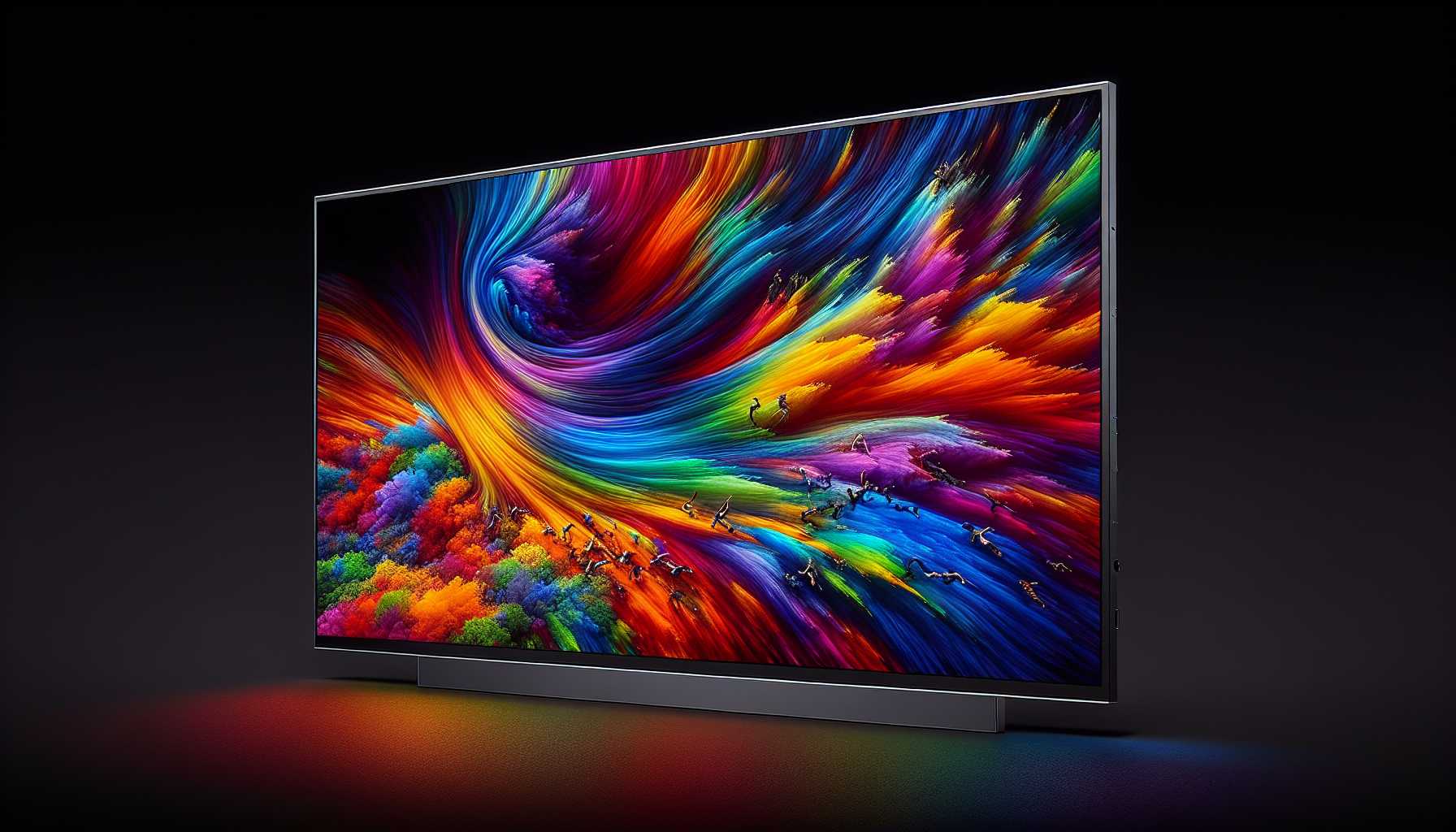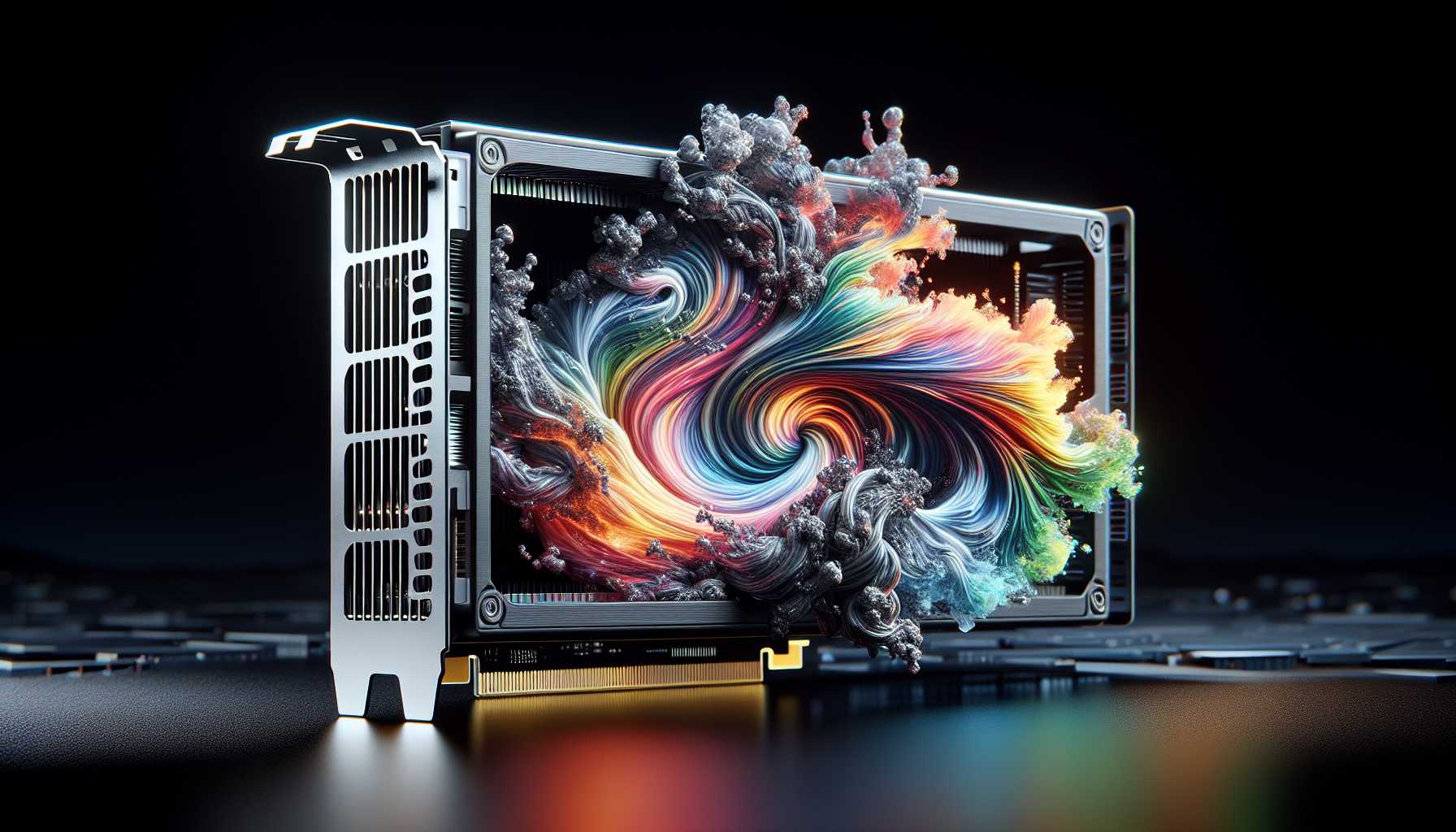Bringing Life to Lackluster Videos: Nvidia’s RTX Video HDR
 AI is at it again, and this time it’s Nvidia waving its hi-tech wand transforming standard dynamic range (SDR) videos into high dynamic range (HDR) spectacles with its latest feature RTX Video HDR. What is this black magic, you might ask? Simply put, if you possess an HDR10-compatible monitor and an RTX GPU from our friends at Nvidia, you can experience colors you never knew existed in your previously mundane videos. RTX Video HDR is linked arms with the 551.23 Game Ready driver, whose grand entrance coincided with the RTX 4070 Ti Super launch. This feature isn’t slinging its spells limited to one browser; no, sir! It spreads its influence across both Microsoft Edge and Google Chrome. It subtly enhances those 4K YouTube videos, which though appearing vibrant pre-spell, now reveal colors in richer depths and detail post the HDR treatment. From my technical expertise as a tech investor and leader, I see this advancement beyond a mere selling point—it’s a testament to the boundless possibilities of what AI can achieve in enhancing our digital experiences. It’s not merely incremental; it’s transformative.
AI is at it again, and this time it’s Nvidia waving its hi-tech wand transforming standard dynamic range (SDR) videos into high dynamic range (HDR) spectacles with its latest feature RTX Video HDR. What is this black magic, you might ask? Simply put, if you possess an HDR10-compatible monitor and an RTX GPU from our friends at Nvidia, you can experience colors you never knew existed in your previously mundane videos. RTX Video HDR is linked arms with the 551.23 Game Ready driver, whose grand entrance coincided with the RTX 4070 Ti Super launch. This feature isn’t slinging its spells limited to one browser; no, sir! It spreads its influence across both Microsoft Edge and Google Chrome. It subtly enhances those 4K YouTube videos, which though appearing vibrant pre-spell, now reveal colors in richer depths and detail post the HDR treatment. From my technical expertise as a tech investor and leader, I see this advancement beyond a mere selling point—it’s a testament to the boundless possibilities of what AI can achieve in enhancing our digital experiences. It’s not merely incremental; it’s transformative.
Leveraging the Power of Tensor Cores: Nvidia’s RTX Gamut
 The mechanism behind this sorcery leverages the tensor cores that debuted with Nvidia’s RTX 20-series GPUs. Tensor cores are, quite simply, the powerhouse behind Nvidia’s AI-driven features, including their Deep Learning Super Sampling (DLSS) system and its lesser-known cousin, the Deep Learning Dynamic Super Resolution (DLDSR). And who can forget Nvidia Broadcast’s Eye Contact feature, ensuring you’re “eye to eye” even when your gaze wanders. The value provided here is more than superficial; it speaks volumes about the future trajectory of content consumption. As a tech aficionado, I am eager to see how this feature evolves and integrates more deeply with our daily computing tasks.
The mechanism behind this sorcery leverages the tensor cores that debuted with Nvidia’s RTX 20-series GPUs. Tensor cores are, quite simply, the powerhouse behind Nvidia’s AI-driven features, including their Deep Learning Super Sampling (DLSS) system and its lesser-known cousin, the Deep Learning Dynamic Super Resolution (DLDSR). And who can forget Nvidia Broadcast’s Eye Contact feature, ensuring you’re “eye to eye” even when your gaze wanders. The value provided here is more than superficial; it speaks volumes about the future trajectory of content consumption. As a tech aficionado, I am eager to see how this feature evolves and integrates more deeply with our daily computing tasks.
AMD’s Response: The Fluid Motion Frames Revolution
 Not one to watch from the sidelines, AMD lunges forward with its Fluid Motion Frames (AFMF), elevating frame rates in DirectX 11 or 12 games for those wielding Radeon RX 6000, RX 7000, and 700M GPUs. AFMF asserts its prowess by delivering up to 97 percent frame rate boosts at 1080p resolution, powering through to a staggering 103 percent at 1440p. AMD’s stride into this territory is another exciting leap in the gaming domain. However, it’s noteworthy that Fluid Motion Frames could bring additional latency, a potential deal-breaker for competitive gameplay. But AMD’s Radeon Anti-Lag technology swoops in as a viable countermeasure. As someone with a vested interest in the competitive gaming space, I find this balance between high performance and low latency to be a delightful duality.
Not one to watch from the sidelines, AMD lunges forward with its Fluid Motion Frames (AFMF), elevating frame rates in DirectX 11 or 12 games for those wielding Radeon RX 6000, RX 7000, and 700M GPUs. AFMF asserts its prowess by delivering up to 97 percent frame rate boosts at 1080p resolution, powering through to a staggering 103 percent at 1440p. AMD’s stride into this territory is another exciting leap in the gaming domain. However, it’s noteworthy that Fluid Motion Frames could bring additional latency, a potential deal-breaker for competitive gameplay. But AMD’s Radeon Anti-Lag technology swoops in as a viable countermeasure. As someone with a vested interest in the competitive gaming space, I find this balance between high performance and low latency to be a delightful duality.
Tailoring Tech in Education: Google’s Classroom AI Expansion
 And how could we discuss AI advancements without tipping our hats to Google? At the Bett ed-tech event, the tech giant paraded a suite of AI-powered tools destined to transform classroom management, accessibility, and lesson planning. The palpable excitement around AI’s expansion in education is, in my view, one of the most significant steps toward realizing a global, equitable education system. These AI-driven features include helpful suggestions for framing questions in educational videos, turning Google Forms into practice sets available in over 50 languages, and even the intriguing Duet AI tool, an assistant to educators in crafting lesson plans. The reach and impact of such tools could redefine the educational landscape, bridging the gap where traditional teaching methods may falter.
And how could we discuss AI advancements without tipping our hats to Google? At the Bett ed-tech event, the tech giant paraded a suite of AI-powered tools destined to transform classroom management, accessibility, and lesson planning. The palpable excitement around AI’s expansion in education is, in my view, one of the most significant steps toward realizing a global, equitable education system. These AI-driven features include helpful suggestions for framing questions in educational videos, turning Google Forms into practice sets available in over 50 languages, and even the intriguing Duet AI tool, an assistant to educators in crafting lesson plans. The reach and impact of such tools could redefine the educational landscape, bridging the gap where traditional teaching methods may falter.
The European Union’s AI Aspirations: Legislative Actions & Support Measures
 Diving into the EU’s burgeoning AI scene, lawmakers are charging forward with a package of support measures aimed at boosting homegrown AI startups. The package includes easier access to high-performance supercomputers for AI model training and additional measures to foster AI application development. The EU’s stance is clear; they’re not merely participants in the AI race but contenders aiming for the pole position. The buzz surrounding “AI Factories,” which conglomerate computing power, data, algorithms, and talent, marks a strategic pivot toward nurturing a thriving AI ecosystem. In my years as a tech thought leader, the significance of such measures is not lost; it paints the EU as a potential powerhouse in shaping the future of AI innovation. In closing, inside the sleek casings and behind the polished user interfaces, AI fortifies its position as a cornerstone of modern technological evolution. Whether enhancing our gaming experiences, redefining educational capacities, or reshaping the investment landscape in AI innovation, these developments signal an admirable investment in an AI-driven future—a future I am invigorated to be part of as we collectively elevate the global tech zeitgeist.
Diving into the EU’s burgeoning AI scene, lawmakers are charging forward with a package of support measures aimed at boosting homegrown AI startups. The package includes easier access to high-performance supercomputers for AI model training and additional measures to foster AI application development. The EU’s stance is clear; they’re not merely participants in the AI race but contenders aiming for the pole position. The buzz surrounding “AI Factories,” which conglomerate computing power, data, algorithms, and talent, marks a strategic pivot toward nurturing a thriving AI ecosystem. In my years as a tech thought leader, the significance of such measures is not lost; it paints the EU as a potential powerhouse in shaping the future of AI innovation. In closing, inside the sleek casings and behind the polished user interfaces, AI fortifies its position as a cornerstone of modern technological evolution. Whether enhancing our gaming experiences, redefining educational capacities, or reshaping the investment landscape in AI innovation, these developments signal an admirable investment in an AI-driven future—a future I am invigorated to be part of as we collectively elevate the global tech zeitgeist.





